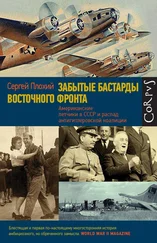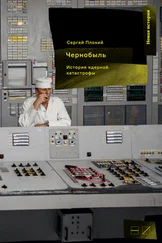Alarm bells were going off not only in Prypiat but also in Kyiv. On the day after the all-Union conference of vendors, Liubov Kovalevskaia, the Tribuna ėnergetika reporter, managed to publish a version of her earlier article about problems with the construction of Unit 5 in the Kyiv newspaper Literaturna Ukraïna (Literary Ukraine), the mouthpiece of the Ukrainian Union of Writers. Much of it was taken verbatim from her Russian-language article in Tribuna ėnergetika and translated into Ukrainian.
But the article in Literaturna Ukraïna was addressed to a wider audience and also made points of more general significance. While observing the obligatory idealization of Soviet socialism and praising the party for its accomplishments and concern about the Soviet people, Kovalevskaia listed arresting examples of the problems faced by construction crews at the Chernobyl power station. According to her, out of 45,500 cubic meters of prefabricated concrete that the construction directorate had ordered in 1985, 3,200 cubic meters of concrete never arrived, and 6,000 cubic meters of concrete turned out to be defective. Also defective were 326 tonnes of sealant for the nuclear waste depository and 220 tonnes of columns for the turbine hall of the reactor under construction. Kovalevskaia allowed herself to criticize not only the vendors who had failed to deliver parts and hardware on time, but also her own construction directorate—the owner of the newspaper she worked for.
“Disorganization weakened not only discipline but also the responsibility of each and all for the results of joint efforts,” wrote Kovalevskaia:
The impossibility or even incapacity of engineering and technical personnel to organize the work of brigades weakened standards. ‘Exhaustion,’ the deterioration of equipment, machines, and mechanisms, the lack of mechanical implements and tools, and the like all made themselves apparent. In a word, all the shortcomings—typical, alas—of the construction mechanism manifested themselves in aggravated form. And the time coincided with the start of economic restructuring, which, as is well known, requires first and foremost the restructuring of human consciousness. 28
Kovalevskaia waited for a reaction to her article, but there was none, either from Prypiat or from Kyiv. As far as the Prypiat party officials were concerned, Kovalevskaia’s style of investigative journalism and record of uncovering abuses by senior officials had long marked her as a troublemaker. Rumor had it that the bosses were preparing to expel her from the party, which would make it all but impossible for her to continue her journalistic career. For the time being, however, no one seemed to care. The world media would not discover the article and its author until a month later, after April 26, 1986. 29

II
INFERNO
4
Friday Night
On Friday, April 25, Prypiat residents were looking forward to the weekend. The previous one had been anything but restful, as the party authorities had turned Saturday, April 19, into an unpaid workday—a yearly ritual to mark the birthday of Vladimir Lenin. Had the father of the Soviet state possessed the life everlasting that the media claimed for his ideas, he would have turned 116 that April 22—not an anniversary of any significance, but that did not matter.
Ostensibly, work on the weekend closest to Lenin’s birthday was a volunteer activity, but in reality, party officials demanded it. Mikhail Gorbachev skipped the occasion, as he was on an official visit to the German Democratic Republic, pushing his “acceleration” ideas there, but his compatriots did not let him down. The Politburo in Moscow reported that 159 million people all over the Soviet Union took part in the event—more than half the recorded population. 1
According to the Prypiat newspaper, the ubiquitous Tribuna ėnergetika , citizens were eager to participate in “Red Saturday,” as the authorities called it. A city official reported, in an article titled “The Holiday of Labor,” that more than 22,000 of his fellow citizens had gone to work that Saturday for free. Workers at the nuclear plant and other city enterprises had produced goods and services valued at more than 100,000 rubles, while the contribution of those involved in construction exceeded 220,000 rubles. The main action was of course on block No. 5, where, according to internal party reports, delays were increasing. The newspaper claimed that the construction workers were doubling their efforts—one crew had managed to pour 30 cubic meters of concrete, which apparently was an achievement significant enough to be praised; it received its due in an article titled “Return in Full.” 2
The next weekend was supposed to be free of such duties. Quite a few young couples in Prypiat were getting ready to hold their weddings on April 26. Sundays were normally reserved for the registration of newborns. Komsomol (Young Communist League) organizers were happy to reserve premises and lend ideological approval to the wedding ritual, formerly part of church tradition, but now not only secularized, but heavily ideologized—newlyweds were expected to lay flowers on monuments to Lenin and memorials to the heroes of the Great Patriotic War. Since Gorbachev had initiated an anti-alcohol campaign, party and Komsomol officials were pushing for alcohol-free weddings. There were few takers in Prypiat. The authorities would count it a success if weddings did not end in drunken brawls between plant workers and “Rexes”—that is, the construction workers from the villages.
Wedding or no wedding, everyone was glad that the weather had finally improved. It was unseasonably warm, with temperatures in the 70s (Fahrenheit). For many, that meant two or even three days of picnics, hiking, and fishing in the neighboring forests along the Prypiat River and its tributaries. Not for nothing had Chernobyl entered the annals of history as a princely hunting ground. The hunting season was still distant, but fishing had already begun. On that Friday Tribuna ėnergetika ran a photo on its back page featuring a young Prypiat resident with a huge catfish in his arms. The caption read, “Such a catch deserves to be in the ‘red corner.’ ” The reference was to makeshift propaganda displays organized by party officials at workplaces. Judging by the image, the catfish weighed at least 40 pounds, and the caption suggested that such a prize catch deserved public recognition.
The newspaper carried all-important information about the fishing season. While fishing was generally prohibited until early June—the end of the spawning season—the authorities allowed limited fishing in areas where spawning was not taking place. The article accompanying the photo identified spots on the Dnieper, Prypiat, and Uzh Rivers where onshore fishing was legal. Members of fishing and hunting associations could catch up to 3 kilograms of “valuable” fish daily, including carp and bream, and up to 10 kilograms of “less valuable” or common fish, such as crucian carp or bleak. Those not belonging to associations were allowed only 2 kilograms of valuable fish and 5 kilograms of common fish. The newspaper said nothing about fishing in the Chernobyl power plant’s cooling pond, which the chief engineer, Nikolai Fomin, had recently advertised as a perfect place for breeding fish. Fishing there was strictly prohibited but still widely popular. Quite a few plant workers fished from the pond at night as the fishing inspectors slept—not from the shore but from boats. 3
While the Prypiat Tribuna ėnergetika catered to the tastes of urbanites getting ready for a pleasant weekend outdoors, the Chernobyl newspaper, Prapor peremohy (Flag of Victory), with a largely rural readership—the town of Chernobyl, located about 16 kilometers southeast of Prypiat, continued to serve as the administrative center of the traditionally rural district around it—was preparing peasants for a busy weekend of collecting birch sap and planting potatoes, one of the region’s main agricultural exports and the peasants’ most important staple. The Saturday issue had articles of interest on both topics. It turned out that in the birch forests near Dytiatky—a village south of Chernobyl that would later give its name to the main entrance point into the Chernobyl Exclusion Zone—a local forestry brigade had managed to collect 90 tonnes of birch sap and ship it to customers. Local collective farms were competing with one another in planting potatoes. Very appropriately, given its name, the Peremoha (Victory) farm was leading in the competition. Its headquarters were located in the village of Stechanka, which turned out to be in its last days—its inhabitants would soon be resettled. 4
Читать дальше
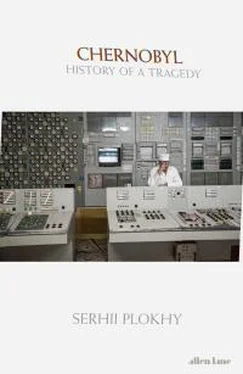


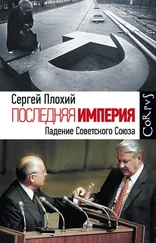



![Сергей Плохий - Чернобыль - История ядерной катастрофы [litres]](/books/385171/sergej-plohij-chernobyl-istoriya-yadernoj-katastrof-thumb.webp)
![Сергей Плохий - Человек, стрелявший ядом [История одного шпиона времен холодной войны]](/books/405163/sergej-plohij-chelovek-strelyavshij-yadom-istoriya-od-thumb.webp)

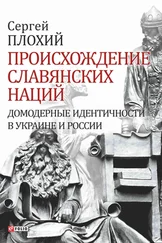
![Сергей Плохий - Потерянное царство. Поход за имперским идеалом и сотворение русской нации [c 1470 года до наших дней]](/books/433093/sergej-plohij-poteryannoe-carstvo-pohod-za-impersk-thumb.webp)
